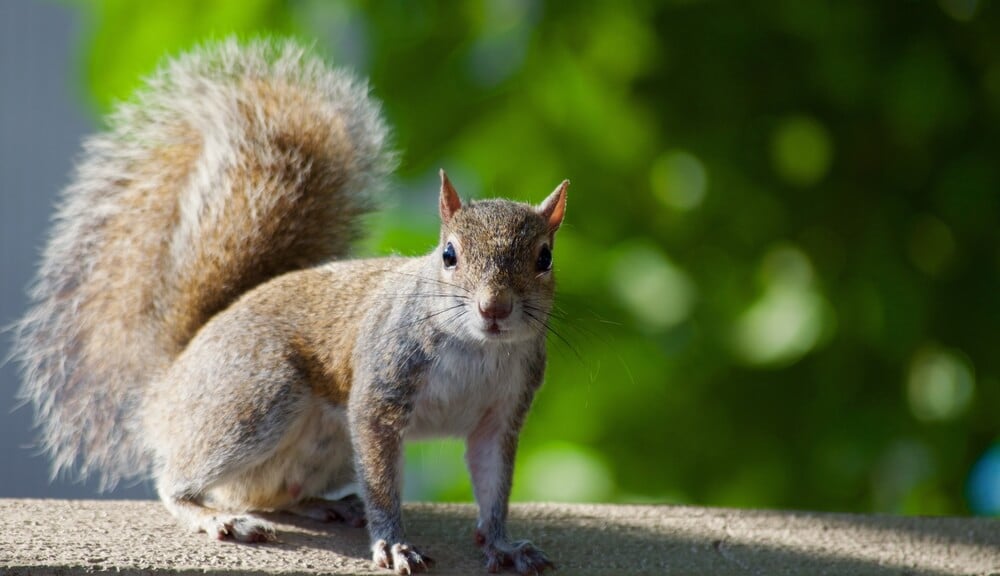Squirrel Feces In My Attic

Squirrel poop can be a pain. Anyone who has ever dealt with an infestation will be very familiar with them and believe it or not, there are a huge range of diseases that can be caused by this seemingly innocuous substance. In fact, a lot of the dangerous diseases that are transmitted between squirrels are done so through urine and feces. If you are dealing with an infestation or if you are planning on going up to your attic because you know that there are squirrels present, then you need to plan out as much as you can so you can get ready to deal with what lies ahead.
Precautions
Various conditions can be transmitted by squirrels through squirrel droppings. This is particularly the case with zoonotic diseases, as they can be passed from a squirrel to a human. It’s vital that you try and take the right precautions before you even think about trying to deal with the infestation you have. The feces can easily carry bacteria and spores, and this can become airborne if disturbed. For this reason, you may want to wear a pair of goggles and a mask so that you can protect yourself from inhaling anything dangerous. Touching the feces is dangerous too, so gloves are a must-have along with long-sleeved clothing. If you aren’t sure about venturing into your attic to deal with the issue yourself then remember that hiring a professional is always a good option. Not sure if you have squirrels or not? Check out our guide on “what kind of animal is in my attic" to find out more.
What does Squirrel Feces Look Like?
.jpg?width=214&name=Squirrel%20Feces%20(1).jpg)
This is an incredibly important point because you have to know the difference between squirrel feces and rat feces. Squirrels tend to be much more active during the day, so this is one point to take into consideration. In terms of color, squirrel feces tend to be light brown or red and oblong-shaped droppings. Rat droppings however tend to be much darker, being more brown or even black. The diet of these two animals is very different, so look at the shape or the size of the feces too. Squirrel feces are much thicker in the middle and they have rounded edges. Rats on the other hand are much narrower and have a pointed end.
Diseases from Squirrel Feces
There are a huge amount of diseases that are transmitted through the feces of a squirrel. This is why it’s so important for you to be careful whenever you are dealing with materials like this. The main concern is the presence of leptospirosis, as this is a bacterial condition which is spread through the urine and the feces of rodents. If you are infected with this condition, then you may find that you end up experiencing serious respiratory problems or flu-like symptoms. Salmonella is another condition that you can catch from squirrel feces, and this will cause vomiting and diarrhea.
Cleaning and Disposing of Feces
If you have the misfortune of finding feces in your attic or your wall space then it’s so important that you clean the area properly. Feces will usually smell quite strong to other animals and it will also draw them into the space which is the last thing that you want. The volume of the feces will usually mean that you need a vacuum cleaner that has a very strong level of suction. You may have to scrape the bottom of the floor with a chisel knife too, so keep that in mind if you can. Try to avoid contaminating other areas of your home when you remove the feces and disinfect as much as possible. If you don’t, the smell of the feces will remain, and the same health hazards mentioned above will also be present.
FAQ's
1. What does squirrel feces look like?
Squirrel feces are light brown or red, oblong-shaped, and thicker in the middle with rounded edges, distinguishing them from rat droppings, which are darker and pointed.
2. Are squirrel droppings dangerous?
Yes, squirrel droppings can carry bacteria and spores that may cause diseases in humans, including leptospirosis and salmonella. Always take precautions when dealing with squirrel feces. Learn more on our Squirrel Removal Services page.
3. How should I safely clean squirrel feces?
Wear gloves, goggles, long sleeves, and a mask. Use a strong vacuum or scraping tools to remove droppings carefully, and disinfect the area thoroughly to prevent contamination.
4. What diseases can be transmitted through squirrel poop?
Squirrel feces can transmit zoonotic diseases like leptospirosis, causing respiratory issues or flu-like symptoms, and salmonella, which can lead to vomiting and diarrhea.
5. How can I prevent squirrels from entering my attic?
Seal cracks and entry points in your attic, remove food sources, and consider professional exclusion methods.




